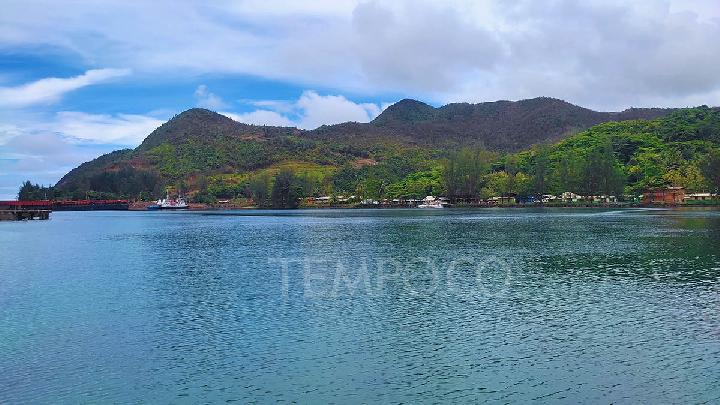TEMPO.CO, Jakarta - Zooming in on countries that no longer exist reflects the profound shifts the world has undergone throughout the ages. Whether through renaming, colonization, political union, or complete dissolution, borders once drawn on maps now belong only to memory.
According to ThoughtCo and Geographical.co.uk, several noteworthy countries that no longer exist include Abyssinia and Austria-Hungary. But these are just the beginning. Other once-existing nations include:
1. Abyssinia
Known today as Ethiopia, Abyssinia was one of the well-known countries that no longer exist. Founded in the 13th century, Abyssinia was rich in history and culture, particularly as this Christian kingdom spread its faith by means of military conquest and by building churches and monasteries. Before the last emperor was overthrown in the 20th century, it resisted European colonization longer than most African states.
2. Austria-Hungary
Austria-Hungary was on the map from 1867 to 1918. This Central European dual monarchy, made up of the Austrian Empire and the Kingdom of Hungary, saw each with its own government, parliament, and laws, while both remained under the rule of Emperor Franz Joseph.
One of the empire’s most defining features was its diverse ethnic groups forming it, including Slovaks, Hungarians, Czechs, and Romanians. Though unique, the diversity also contributed to its collapse, upon the inevitable struggle to balance the politics and social aspects of it all.
3. Tibet
Once an independent kingdom nestled high in the Himalayas, Tibet enjoyed sovereignty for centuries before being annexed by China in 1950. Due to its strategic location, the 7th century-established kingdom was sought after by multiple countries aside from China, including Britain. Today, it’s an autonomous region within China, named as the Xizang Autonomous Region of China.
4. Czechoslovakia
Founded in 1918 after the fall of Austria-Hungary, Czechoslovakia united the Czech and Slovak peoples into a single democratic state. While initially embraced by both sides, tensions emerged when the official state reneged on Slovak promises to have their own independent state administration, parliament, and judiciary. As dissatisfaction continued to grow, Czechoslovakia later split into two sovereign nations: the Czech Republic and Slovakia
5. Sikkim
Named among the countries that no longer exist, Sikkim was a small Himalayan kingdom with close ties to British India and later independent India. In 1975, following a controversial referendum, Sikkim was absorbed into India as its 22nd state. Bordering countries like China, Bhutan, and Nepal, Sikkim’s location gives it critical importance in India’s defense and foreign policy strategy.
6. Prussia
Once a dominant military force in Europe, Prussia was particularly notable for its role in the unification of Germany. After a series of strategic wars in the 1860s, many German-speaking territories were brought under Prussian control, leading to the establishment of the German Empire in 1871.
Widely regarded as the embodiment of German militarism, Prussia ceased to exist as a state in the aftermath of World War II. Today, its former territories are part of modern-day Germany and Poland.
7. Yugoslavia
Formed after World War I, Yugoslavia was a federation of six socialist republics. Its violent breakup was largely driven by ethnic tensions, political instability, and the rise of nationalism. In 1991, one by one of the republics declared independence, started off by Slovenia. By 2003, only Serbia and Montenegro remained. Just three years later, the state ultimately dissolved when the two declared independence separately.
8. Burma
Burma was the long-standing identity of what is known today as Myanmar. Although the state and its territory remain, Burma was once a British colony. In 1948, it gained independence but chose not to join the British Commonwealth, unlike neighboring India. In 1989, the ruling military government officially changed the country's name to Myanmar.
9. Tanganyika
Existing from 1961 to 1964, Tanganyika was a former British-administered territory in East Africa. Before its establishment, the region had been inhabited by various ethnic and cultural groups, including Asians, Arabs, and Bantu-speaking peoples, as early as the 10th century.
In 1964, Tanganyika merged with the island of Zanzibar to form the United Republic of Tanganyika and Zanzibar. Eventually, Zanzibar and mainland Tanzania began operating with a degree of political autonomy.
10. Ceylon
Located in South Asia, Ceylon was one of the countries that no longer exist. Before acquiring the modern-day name of Sri Lanka, this nation was a British colony from 1815 until 1948. Retaining the name after its independence, it was in 1972 when the country adopted a new constitution and officially changed to the Republic of Sri Lanka.
The stories of these countries that no longer exist show that while borders and names may shift, the legacies of them continue to shape modern nations. For a similar, intriguing historical topic, let’s take a look at the oldest civilizations in the world.
Editor’s Choice: World's 5 Largest Nickel-Producing Countries: Is Indonesia Among Them?
Click here to get the latest news updates from Tempo on Google News































:strip_icc():format(jpeg)/kly-media-production/medias/3977835/original/066021800_1648524608-pexels-ahmed-aqtai-2233416_1_.jpg)
:strip_icc():format(jpeg)/kly-media-production/medias/3449231/original/035609000_1620241432-000_99C2L3.jpg)
:strip_icc():format(jpeg)/kly-media-production/medias/4779768/original/056174500_1711004488-hands-holding-knife-fork-alarm-clock-plate-blue-background.jpg)
:strip_icc():format(jpeg)/kly-media-production/medias/4678420/original/041411600_1701993066-pexels-thirdman-8489077.jpg)
:strip_icc():format(jpeg)/kly-media-production/medias/5134530/original/076641900_1739622826-20250215-Prabowo-AFP_7.jpg)
:strip_icc():format(jpeg)/kly-media-production/medias/3626995/original/056226000_1636431538-252444828_305857281141144_6357930935168472204_n.jpg)
:strip_icc():format(jpeg)/kly-media-production/medias/1619105/original/061499300_1496997418-ramadan-main.jpg)
:strip_icc():format(jpeg)/kly-media-production/medias/3508689/original/070798000_1626139545-20210713-Elon-Musk-SolarCity-5.jpg)
:strip_icc():format(jpeg)/kly-media-production/medias/4769102/original/014075000_1710171937-20240311-Taraweh_Pertama_di_Istiqlal-ANG_1.jpg)
:strip_icc():format(jpeg)/kly-media-production/medias/5106410/original/089112900_1737608852-Buya_Yahya.jpg)
:strip_icc():format(jpeg):watermark(kly-media-production/assets/images/watermarks/liputan6/watermark-color-landscape-new.png,1100,20,0)/kly-media-production/medias/5140628/original/019242500_1740225866-Persita_Tangerang_vs_Borneo_FC-35.jpg)
:strip_icc():format(jpeg)/kly-media-production/medias/3902213/original/084057500_1642045386-pexels-ralph-w-lambrecht-1446076__1_.jpg)
:strip_icc():format(jpeg)/kly-media-production/medias/4878826/original/064720000_1719661833-WhatsApp_Image_2024-06-28_at_23.09.07.jpeg)
:strip_icc():format(jpeg)/kly-media-production/medias/5141412/original/005545700_1740364919-Snapinsta.app_481203089_18446336839077229_3957692586101845976_n_1080.jpg)
:strip_icc():format(jpeg)/kly-media-production/medias/771429/original/006248600_1416892825-m2.jpg)
:strip_icc():format(jpeg)/kly-media-production/medias/2265569/original/050855900_1530514161-20180702-Harga-Pertamax-Naik-di-Semua-Daerah--TALLO-4.jpg)
:strip_icc():format(jpeg)/kly-media-production/medias/2240997/original/070157500_1528277766-arches-architecture-building-460680.jpg)
:strip_icc():format(jpeg)/kly-media-production/medias/4787912/original/016408900_1711630423-20240328-Penukaran_Uang-AFP_6.jpg)
:strip_icc():format(jpeg)/kly-media-production/medias/5139103/original/083951400_1740056485-Screenshot_20250220_192744_Instagram.jpg)
:strip_icc():format(jpeg)/kly-media-production/medias/4290349/original/045313100_1673596178-cek_fakta_kemensos_dana.jpg)